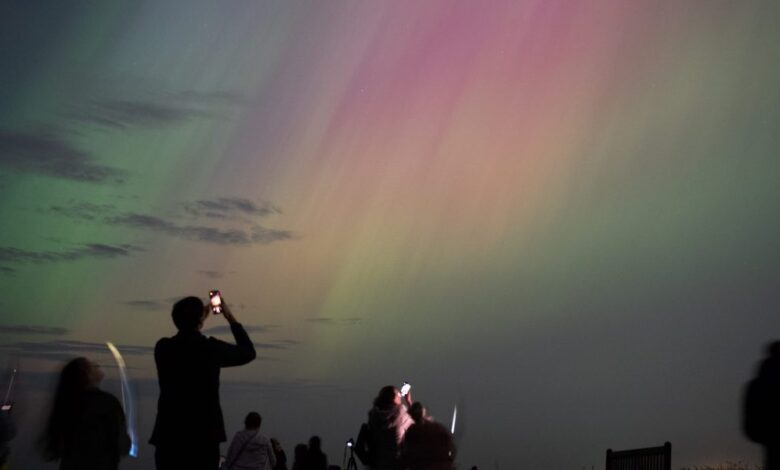Solar storms could bring rare northern lights to the southern United States


A serious one solar storm Space weather forecasters said Wednesday are headed toward Earth and could further strain the power grid as the U.S. deals with a succession of major storms.
The National Oceanic and Atmospheric Administration has issued one severe geomagnetic storm watch from Thursday to Friday after one explosion from the sun was discovered earlier this week. Such a storm could temporarily disrupt power supplies and radio signals.
NOAA has notified operators of power plants and orbiting spacecraft to take precautions. It also warned the Federal Emergency Management Agency of the possibility of power outages, as the organization dealt with the devastating aftermath of Hurricane Helene and prepared to respond. Storm Milton across the Gulf of Mexico toward Florida.
Forecasters do not expect the latest solar storm to surpass the one that hit Earth in May, the strongest in more than two decades. But they won’t know for sure until it’s just 1 million miles (1.6 million kilometers) away, where spacecraft can take measurements.
Florida is far enough south to avoid any power disruptions from solar surge unless it gets much larger, said scientist Rob Steenburgh of NOAA’s Space Weather Prediction Center.
“That adds a little bit of comfort level,” Steenburgh said. “Why we are here is to let them know so they can prepare.”
Shawn Dahl, a space weather forecaster with NOAA, said experts are more concerned about potential impacts to the power grid in areas devastated by Hurricane Helene two weeks ago.
According to NOAA, the storm could also cause auroras in the far south of the United States as well as the lower Midwest and Northern California, although the exact location and timing are uncertain. Skywatchers are reminded to point their smartphones upward to take photos; Devices can often capture auroras that the human eye cannot.
A solar storm in May produced dazzling auroras across the Northern Hemisphere and caused no major disruptions.
The Sun is near the peak of its current 11-year cycle, sparking all the recent solar activity.
___
The Associated Press Health and Science Department receives support from the Howard Hughes Medical Institute’s Science and Education Communications Group. AP is solely responsible for all content.




